
Designed for road trips, car camping, and everyday use – I built a kitchen for my car – featuring a high-performance cooler, a pull-out water jug, and an extendable table.
Pull-Out Water Jug
Mounted on smooth, sturdy rails, a 3.5-gallon water jug with a built-in faucet effortlessly slides out of the car, where it can be used for refilling water bottles, boiling pasta for dinner, brushing your teeth, or even for cleaning up pots and pans after a hearty meal.
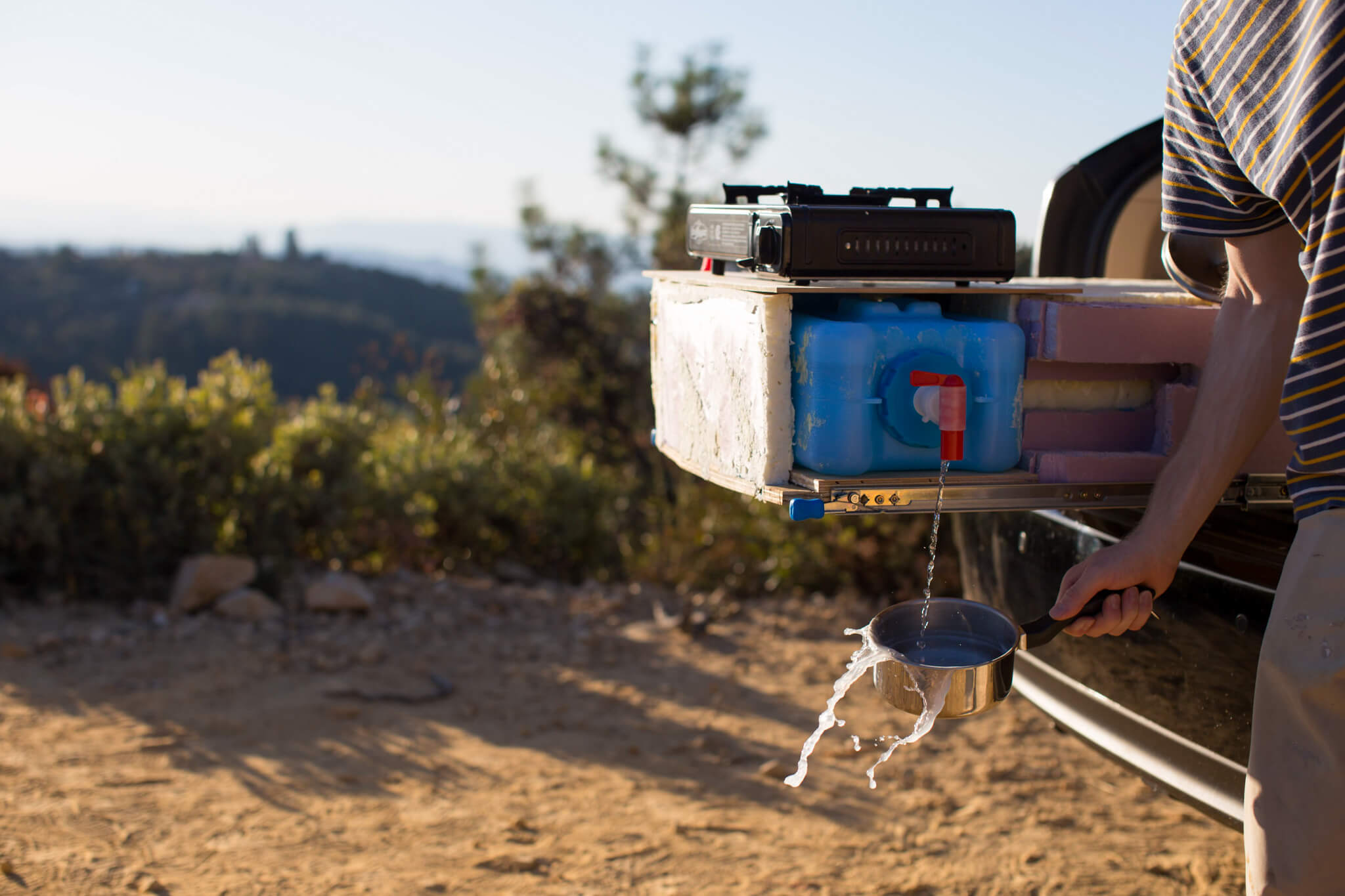
Wrapped in high-quality insulation, this jug remains cool even during the hottest days, ensuring crisp and refreshing water at all times.
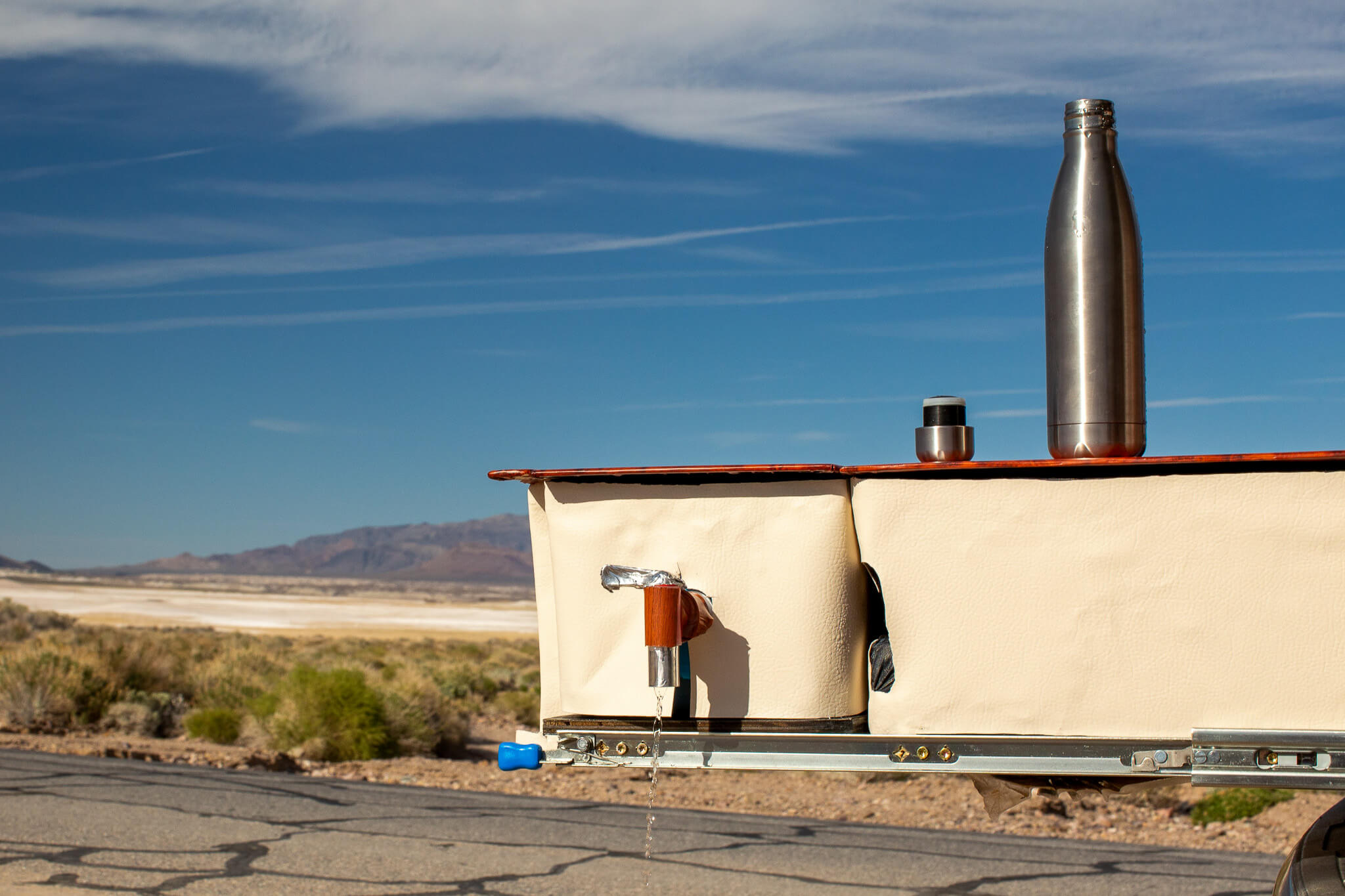
High-Performance Cooler
Encased in up to 5 inches of foam board insulation, this modified Coleman cooler is comparable in performance to name-brand coolers like Yeti. It will preserve the freshness of your food for days – even for perishables like milk and raw meat.

The cooler is equipped with a Bluetooth-enabled thermometer, allowing you to monitor the internal temperature directly from your phone, providing peace of mind with the knowledge that your food is at a safe temperature.

Versatile Slide-Out Table
This also doubles as a table, offering a convenient surface for setting up your portable stove or enjoying a meal on the road.

This impromptu table also comes in handy when local taco trucks don't provide seating areas, or when Costco's food court is too loud and crowded.

Seamless Lexus Styling
Beyond its functionality, every detail of this build is styled to match the car's colors and materials, featuring ivory leather wrapping on the sides and an OEM cargo mat on the top. Even the interior components have been spray-painted black to ensure a cohesive look.

The tabletop is hand-carved from plywood and wrapped in wood grain vinyl, matching the car's wood trim interior and giving it a premium look.
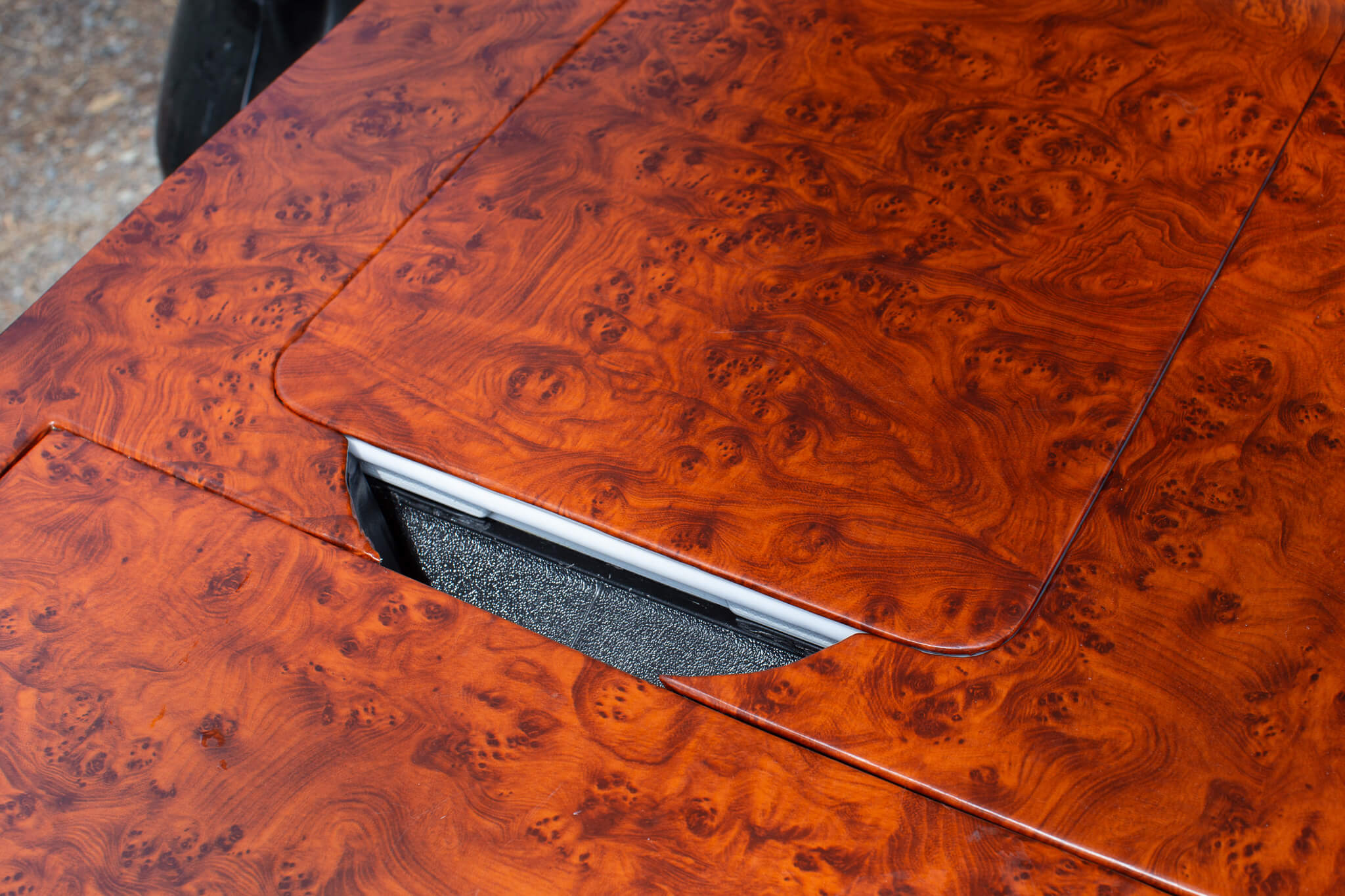
Modular Design
The cooler and water jug can both be removed for easy cleaning and restocking. Every piece is built like LEGO – held in place through interlocking friction, gravity, and magnets.
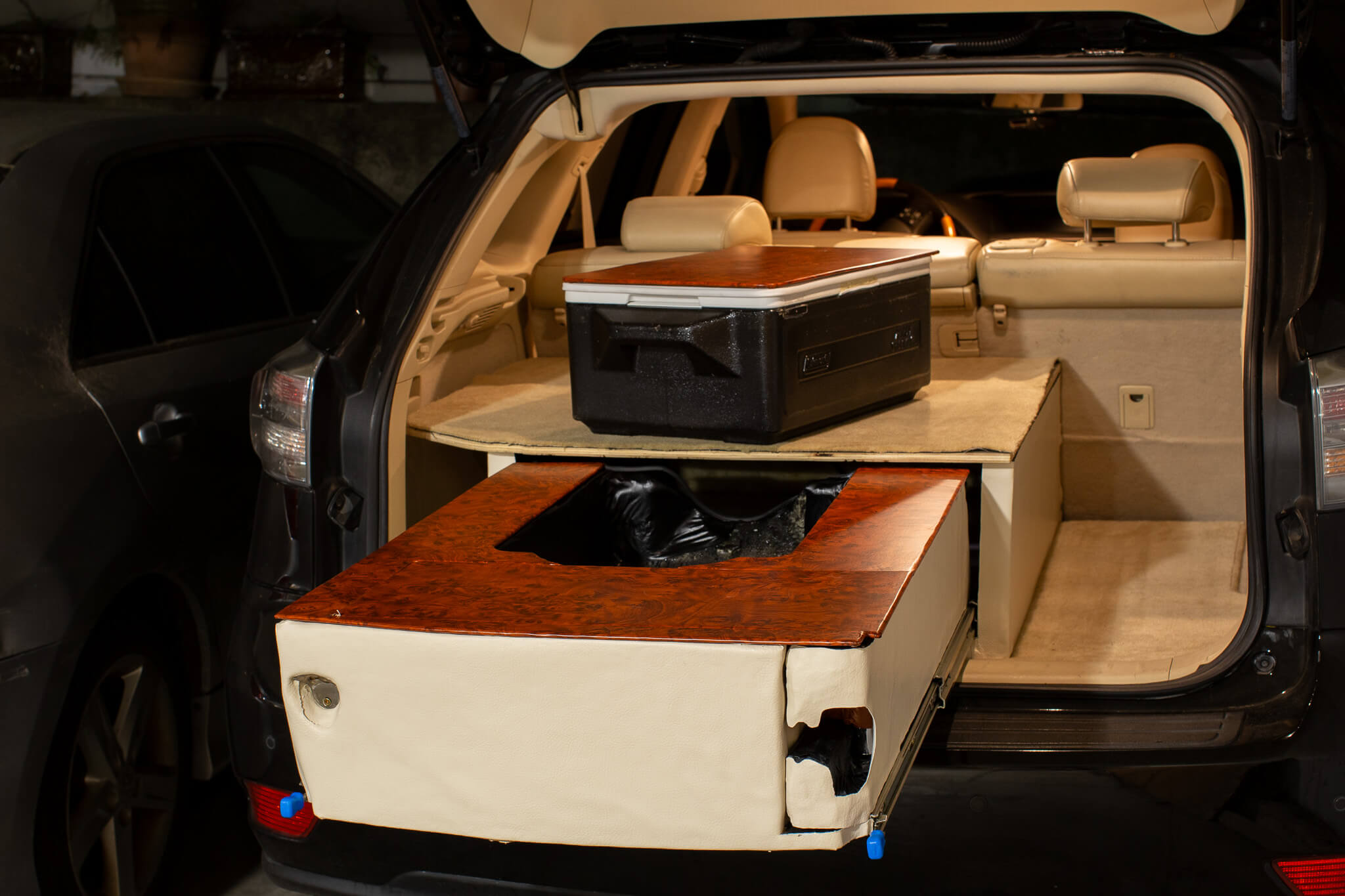
Cooler Performance Test Results
To measure my cooler's capabilities, I conducted a performance test against an unmodified version of it and a similarly sized Yeti cooler. Each of the 3 coolers sat in the back of my car and were loaded with 9 lbs of ice for the test. They remained shut for one week while the ice slowly melted and Bluetooth-enabled thermometers collected internal temperature data.
The unmodified $20 Coleman cooler was the first to give out, lasting just shy of 2 days – 1 day and 20 hours – before the temperature started to drastically rise, indicating that the melted ice water had reached room temperature.
The Yeti Roadie 15 lasted more than twice as long, with temperatures starting to rise after 4 days and 4 hours.
My cooler was just 8 hours behind the Yeti at 3 days and 20 hours before the temperature started climbing. So close!
I'm surprised to see a noticeable difference in temperature between my cooler and the Yeti cooler, even though they ended up lasting almost the same amount of time. The Yeti spiked up to 50°F on the first day while mine only peaked at 42°F. This discrepancy might be due to the placement of the thermometers and the difference in shape between the coolers. The Yeti has a tall, narrow shape, while the Colemans are shorter and more horizontal, and since the thermometers are mounted on the ceilings, there's a greater distance between the ice and the thermometer in the Yeti.
Room for Improvement
I'll be honest – this project ended up being too big and too heavy to be considered practical. While everything is fully functional, it hogs up valuable real estate in my car and is a hassle to remove because of how much it weighs.
One culprit for the bloated size is all of the insulation, which does help keep things cool, but the results are frankly underwhelming. In hindsight, I should have simply purchased a high-performance cooler instead of going the DIY route and trying to create my own. Additionally, the 3.5-gallon water jug is disproportionately large compared to the size of the cooler, so a smaller jug would have been a better choice.
The weight is largely to blame on all of the wood used. If I were to rebuild it, I would opt for lighter materials like aluminum and 3D-printed components instead.
The Journey of Creation: Learning by Doing
When I first started on this project, I was stepping into uncharted territory. With no prior experience in woodworking, insulation, or anything of the sort, I had to rely on a slow process of trial and error.
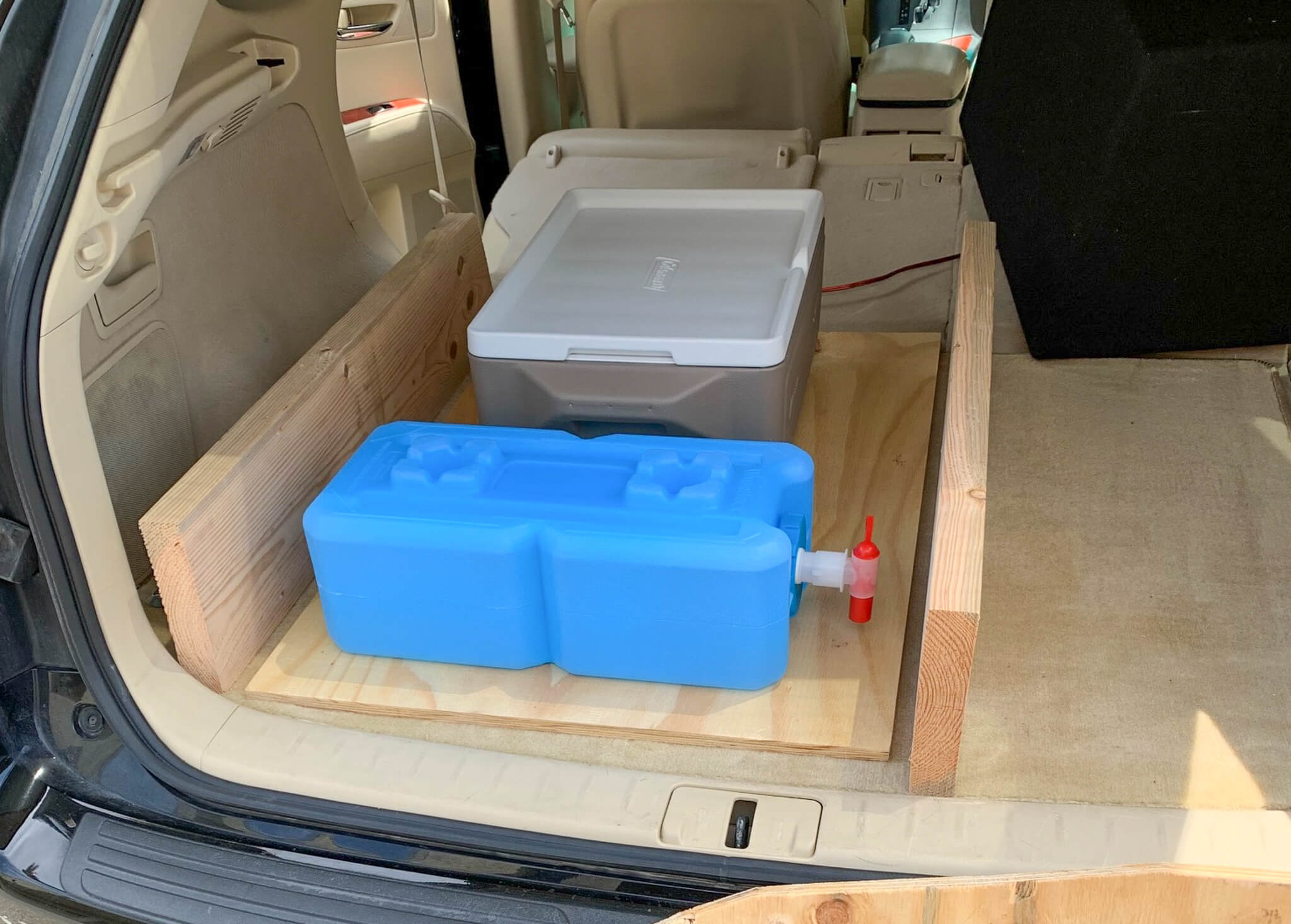
At first it seemed relatively straightforward. "Just mount the rails, mount the insulation, and call it a day," I thought.

However, I quickly realized the complexity involved and found myself committed to resolving countless issues in an endless pursuit of perfection.
For example, to optimize the cooler’s performance, I created an exact mold of the cooler using spray insulation foam in a very crude process involving a tub of canola oil, a 40 lb dumbbell, a bread knife, and a lot of patience.
There are many other details hidden underneath the kitchen's faux leather skin:
- UHMW polyethylene tape to allow the entire project to slide out smoothly and quietly
- Neodymium magnets to catch sliding pieces and coax them into place
- Steel braces to reinforce the foam walls
- 2mm rubber seal strips to close any air gaps around the cooler
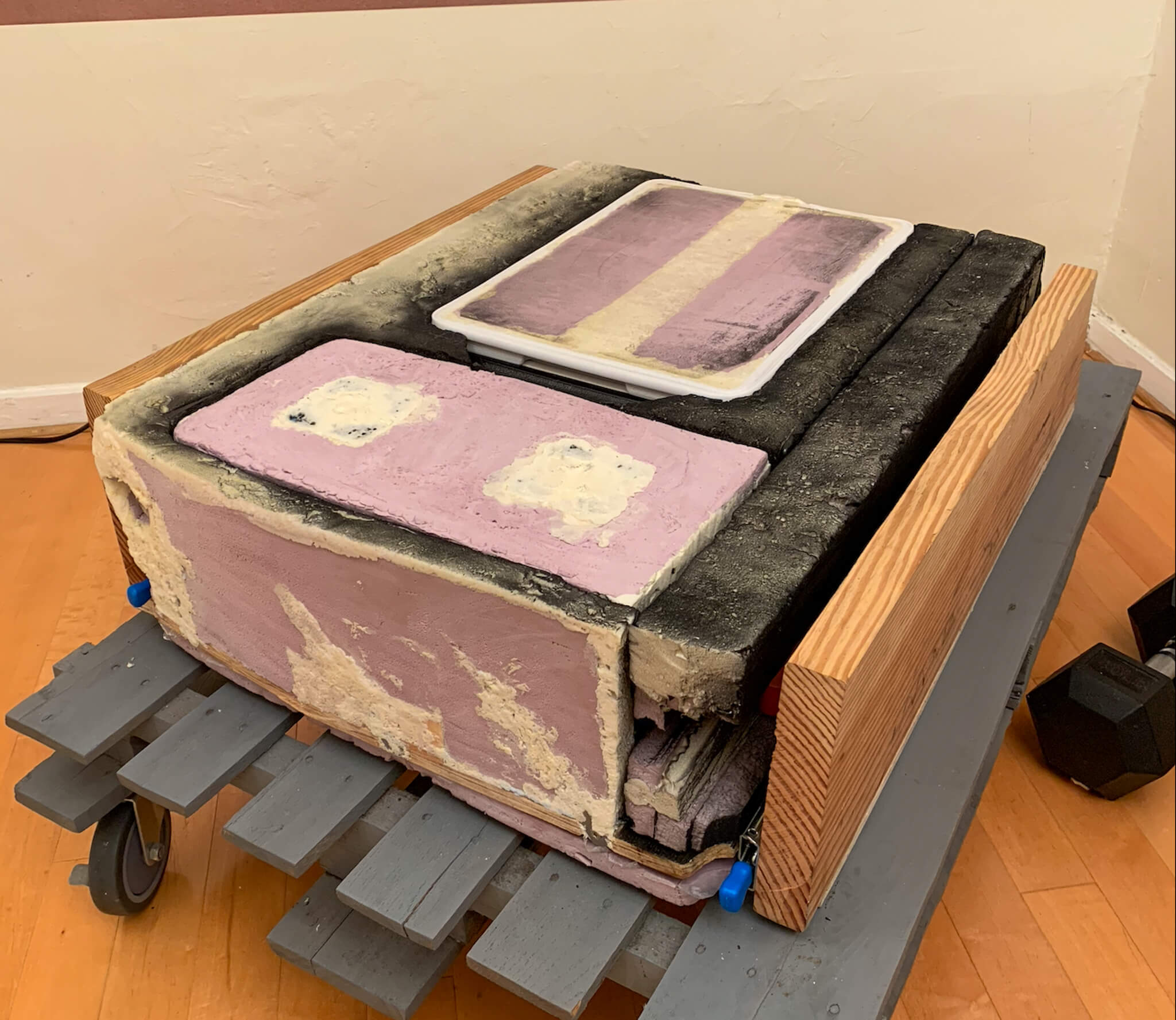
But eventually I forced myself to look past the imperfections and move on to finish the project.
Conclusion
I had an idea to build a kitchen for my car and I was successful in bringing that idea to life. While it may not be the most practical car accessory, I pursued this project simply because I like to build things. There's something magical about the process of creating something – from the initial spark of an idea to proudly sharing the finished product – the journey of bringing an idea to life is an adventure that never fails to captivate me.
Building this also left me with a valuable new skillset that I can apply to future projects or simply put to use in repairing things around my apartment. For me, learning through hands-on experience like this is more effective and more enjoyable than formal classes or lengthy YouTube tutorials.
Lastly, I love that this kitchen acts as an excuse to take a friend on an adventure – be it a road trip to Death Valley, camping in Lake Tahoe, or just a trip to Costco.

I hope that my journey inspires you to take on your own projects and discover the joy of creating something from scratch.
Thanks for reading!